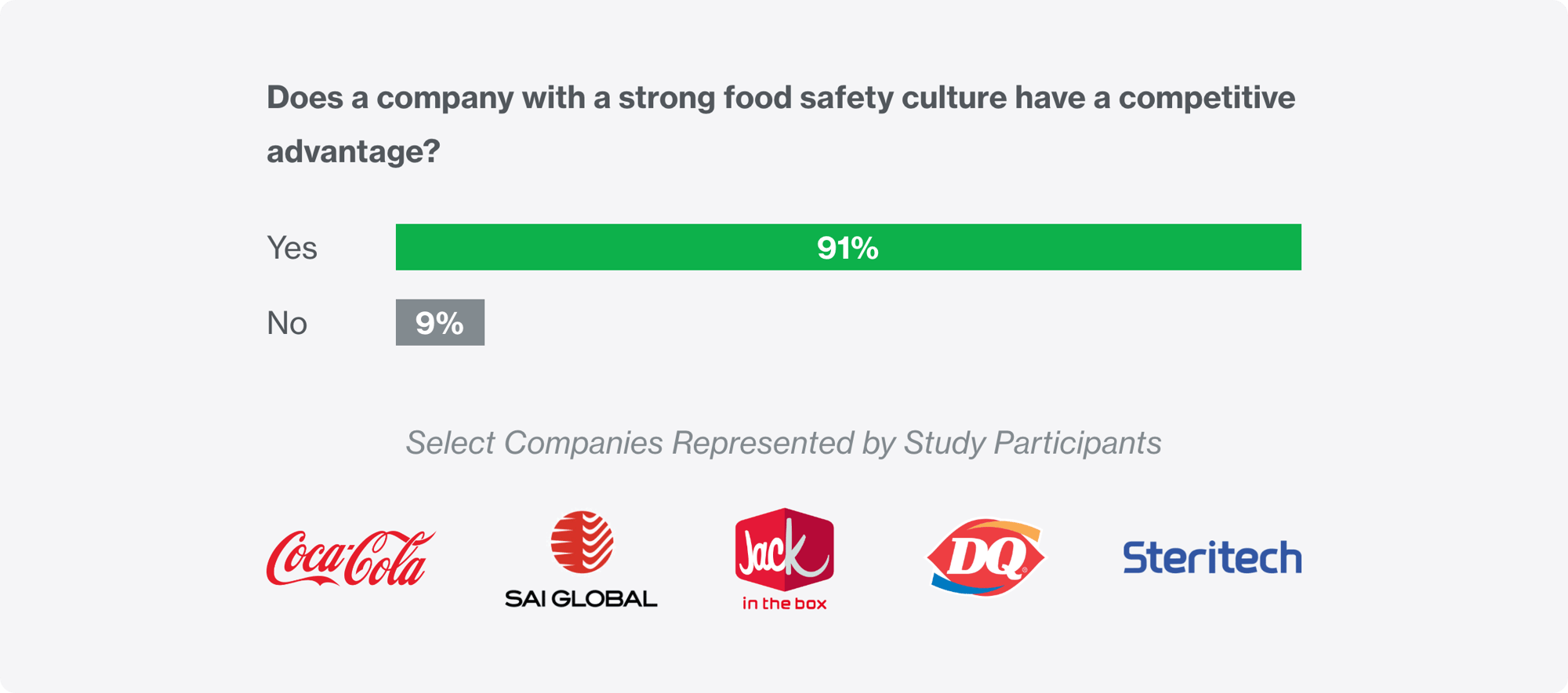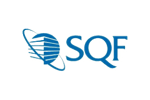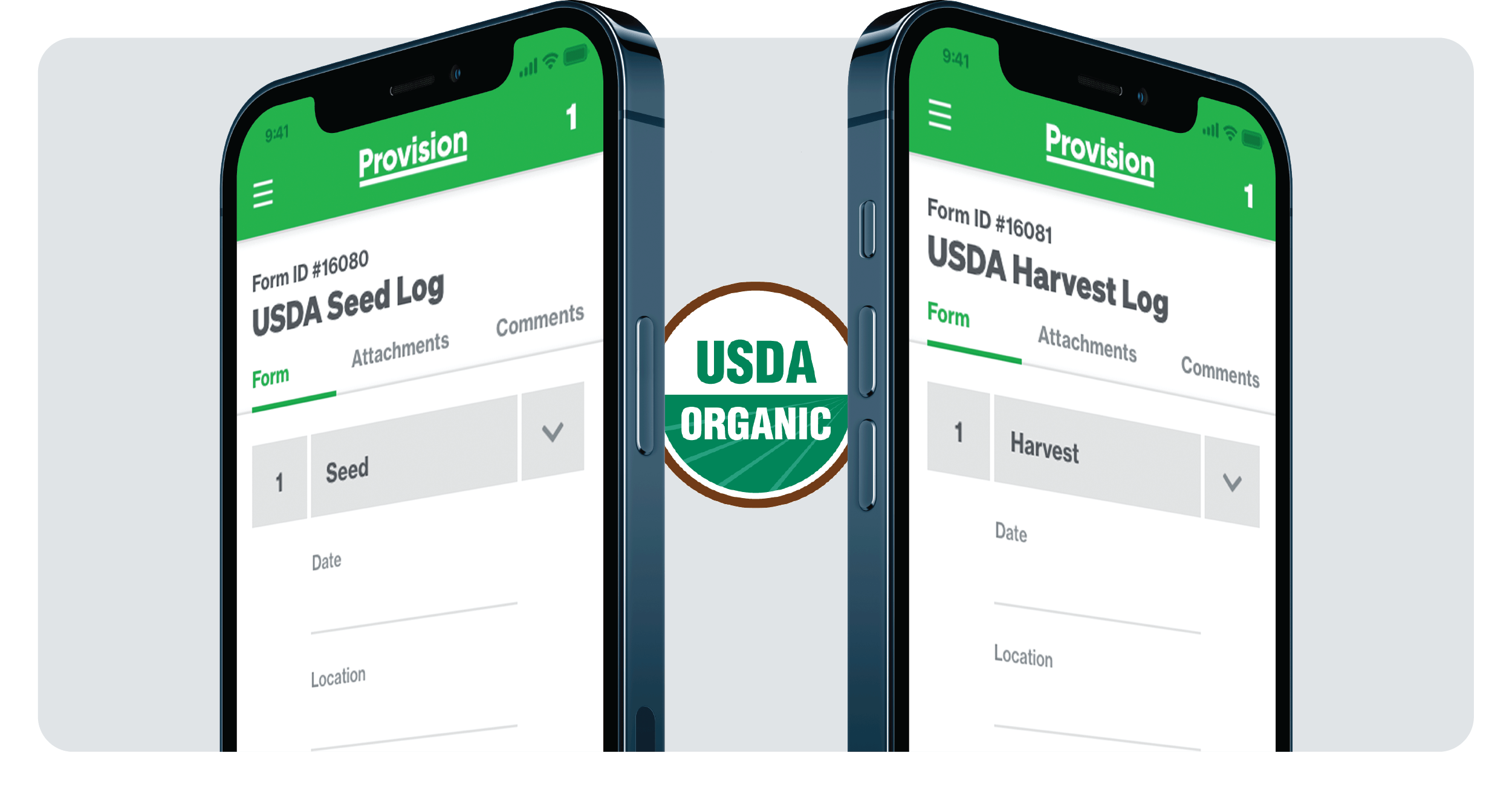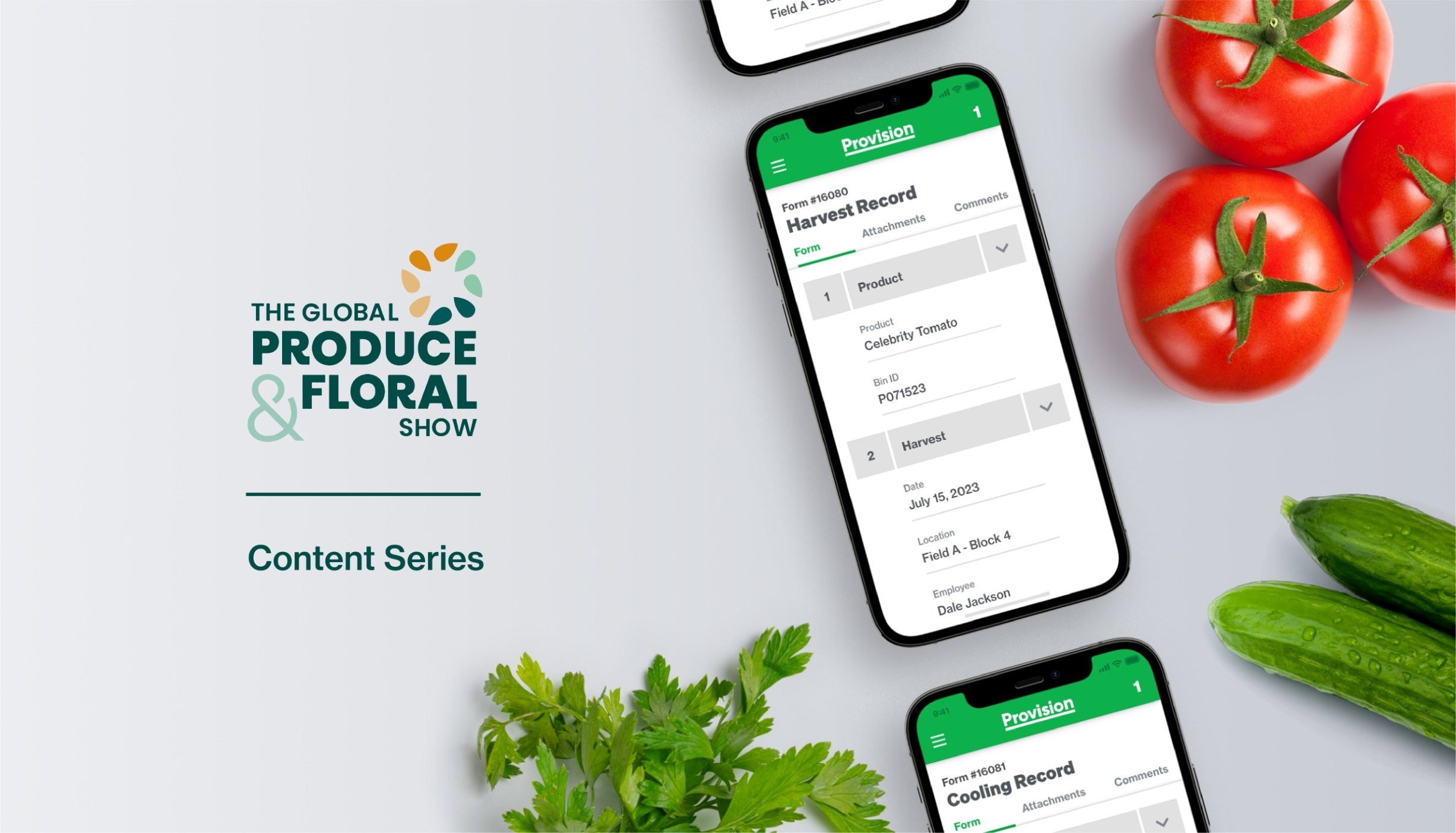Competitive Advantage
To establish food safety culture, companies must invest in systems that enhance commitment, competence, and communication among all levels of their staff. This investment can drive widespread benefits in any company, building process compliance to better control safety, quality, and cost.
Laura Wildey, a Food Safety Specialist, indicates that consumers are now more likely to choose companies that promote their food safety culture and demonstrate a public commitment to curb food-borne illness.
A 2022 study of 80 North American food industry professionals shows that investment in food safety culture can create a competitive advantage.

Study by Provision Analytics, 2022.
Market Demand
To establish this competitive advantage, companies must first meet the baseline requirements of their food safety certifications. In today's business environment, nearly all investment is being focused on certifications recognized by the Global Food Safety Initiative ("GFSI").

GFSI-Recognized Certifications With Food Safety Culture Requirements
GFSI was founded by the world's largest retailers to harmonize food safety standards against one international benchmark. When implemented properly, GFSI standards ensure safe food for consumers - thereby protecting retail brands - while also saving retail buyers the time of evaluating many region- or commodity-specific standards.
For these reasons and more, GFSI has become increasingly prominent. Most major retailers actively participate in GFSI's governance coalition, and many major retailers require GFSI-recognized certifications to be approved as a vendor. When major retailers conduct audits of their vendors, many will use GFSI requirements to evaluate food safety culture.

Major Retailers on GFSI's Governance Coalition
As major retailers spur the adoption of GFSI, their major shelf brands have in turn pushed GFSI requirements down their own supply chains to mitigate compliance risk. These major shelf brands are also participating in GFSI's governance coalition, thereby shaping future standards for food safety culture.

Major Shelf Brands on GFSI's Governance Coalition
Across global supply chains, this overwhelming support creates a massive market demand for companies to enhance their food safety culture.
The Bottom Line
If your company aims to work with major retailers or shelf brands, it will likely need to meet GFSI requirements for food safety culture. Companies that exceed the baseline may achieve a sustainable competitive advantage.
Certification Requirements
Overarching Standards
In 2018, GFSI published its position paper, "A Culture of Food Safety," which sparked one of the industry's biggest shifts. While many GFSI-recognized certifications were inherently built around a premise of food safety culture, this shift established new, firm, and specific requirements for certification audits.
To meet certification requirements, companies must define their values and roles, create supporting policies and procedures, and implement records that track those in action. Companies' records should produce key metrics. Combined with continuous employee feedback, the metrics should guide continuous improvement in food safety culture, with specific scoring thresholds defined for specific management actions.


Requirements By Certification
GFSI-recognized certifications are relatively uniform in their requirements, but each certification may place a different emphasis on certain elements of food safety culture.

- Tracking key metrics
- Holding regular food safety meetings
- Doing regular facility walk-throughs
- Soliciting employee feedback

- Tracking key metrics with shared scorecards or dashboards
- Holding regular food safety meetings and conducting follow-up
- Soliciting employee feedback
- Tracking key metrics
- Providing strong and continuous staff training
- Soliciting employee feedback


- Tracking key metrics, particularly related to water testing and chemical application
- Providing multi-lingual staff training
- Soliciting employee feedback
-
Draw metrics out of all records. Create dashboards and scorecards for your key metrics, and make those visible for all employees. Discuss your measured performance in all regular meetings, and outline improvement objectives in your written quality policy.
-
Track who discovers safety deviations and reward those employees in your regular meetings.
-
Stretch out your food safety training for employees. It's not a one-time thing, but an ongoing deliverable that should be readily accessible while they're doing work.
-
Structure food safety training as a quiz, so you can trend your training scores as a KPI for staff competence. Create clear SOPs for follow-ups based on scoring thresholds.
-
Do regular facility walk-throughs daily or weekly, to demonstrate you understand what's actually happening on the production floor. Ensure leaders such as the GMs or plant managers join often.
-
Allow employees to submit feedback anonymously. This ensures they feel safe sharing observations, good or bad.
-
Structure employee feedback with a numerical survey template, so you can trend your scores as a KPI for staff sentiment. Create clear SOPs for follow-ups based on scoring thresholds.
Management Systems
How to Take Action Efficiently and Effectively
Food safety software such as Provision can enhance the management of food safety culture. The key is to find an intuitive system that can be used by non-technical operators and management alike. By unifying all people and data in one shared FSQA hub, companies often improve visibility and communication. Ensure your software is fully configurable to run your own unique policies, procedures, records, and metrics.
-
Improve Your Metrics
When companies use paper records, data must be duplicated into a digital system to produce metrics for dashboards and scorecards. This is not only inefficient, but regularly out-of-date, preventing real-time measurement and response.
When companies use spreadsheets for records, non-technical operators may struggle to quickly capture data from the floor, and metrics may be undermined by typos or accidental breaks in exposed formulas.
Clean digital records should be configured in software with corresponding instructions, reminders, and rules, helping operators to enter clean data for metrics. Data submitted in records should automatically flow into fully configurable reports, producing real-time scorecards and dashboards custom to your KPIs.
-
-
- Set rules in digital records to instantly flag deviations
- Set up automated tracking of non-conformance count, type, and severity in digital records
- Tie in related data such as the employee who spotted the non-conformance
- Set up automatic math in digital records to score activities like staff training and surveys
- Build custom reports to distill and analyze the data submitted in digital records
- Visualize your report data in food safety dashboards
-
-
Enhance Operator Understanding
It's estimated that 20% of food workers in the U.S. speak English as a second language. If your food safety documentation is English-only, language barriers may limit operator competence.
It's also common to post laminated policies and procedures on office walls. While this creates some visibility, most operators won't leave the field or the floor to look up help, which can lead to many avoidable mistakes. When instructions and help are delivered verbally, companies also limit the documented communication they have available for audits.
In a strong digital system, you can streamline instructions, rules, and translation to build compliance.
-
-
- Embed SOPs and help within digital records to ensure instructions are readily accessible
- Enable messaging in digital records to enhance ongoing training communication
- Set requirements in records that color-code mistakes and give conditional tips
- Schedule recurring training and automatically score staff results
- Enable live translation into 109 languages for any record or policy
-
-
Clarify Team Roles and Ongoing Responsibilities
Most companies have dozens of time-sensitive record templates that need to be completed regularly. If staff rely on memory or continuous verbal reminders, there will likely be missing data and incomplete procedures, hampering collaboration for food safety culture.
Companies can streamline their task management with a unified FSQA calendar that is directly linked into records. This should automate reminders and alerts, creating clear responsibilities, and streamlining collaborative workflows.
-
-
- Schedule time-sensitive records with one-off or recurring deadlines
- Clearly assign those tasks to specific people or teams
- Enable reminder notifications and overdue tracking
- Utilize email notifications as well as in-app alerts
- Automate ongoing assignments based on record statuses and team roles within workflows
-







